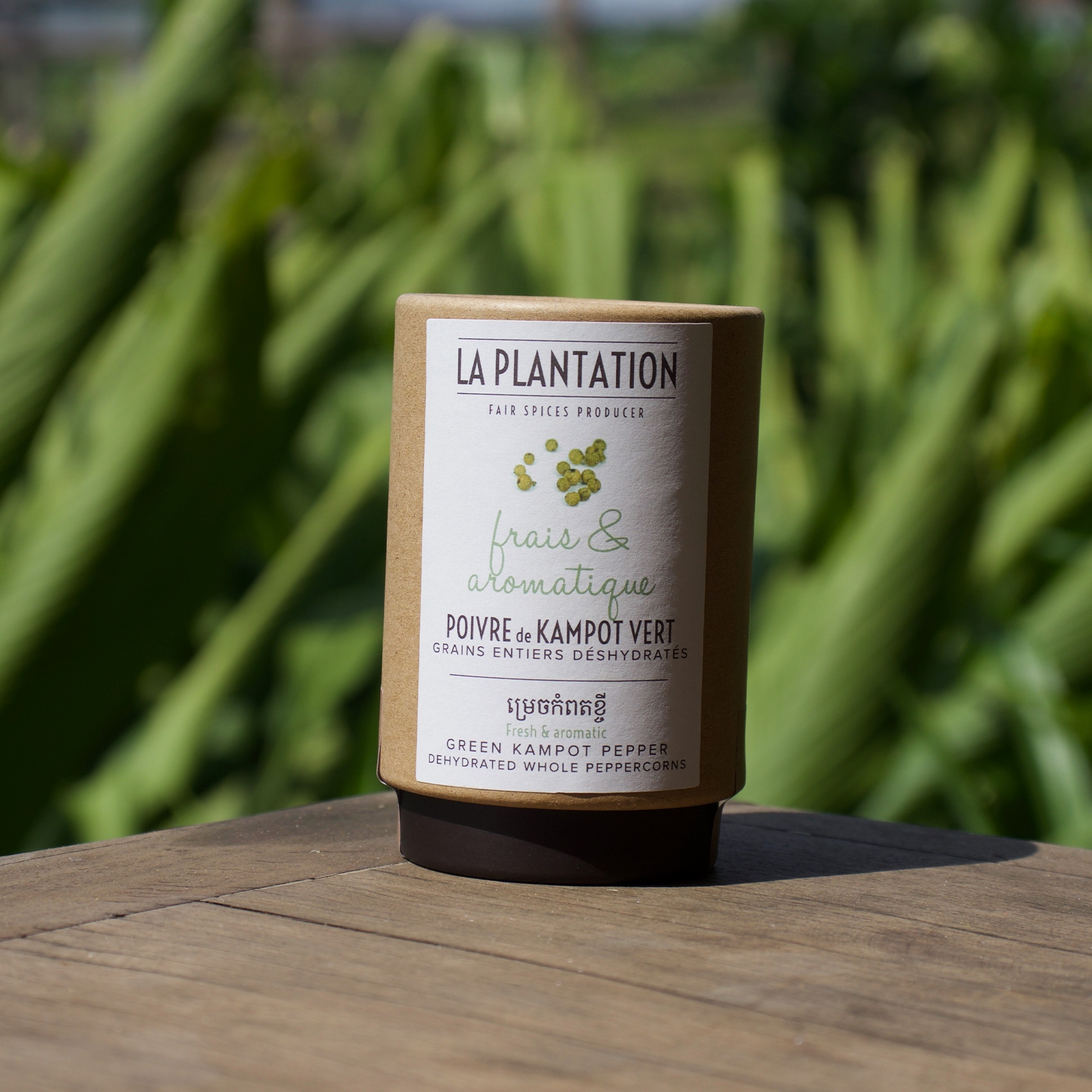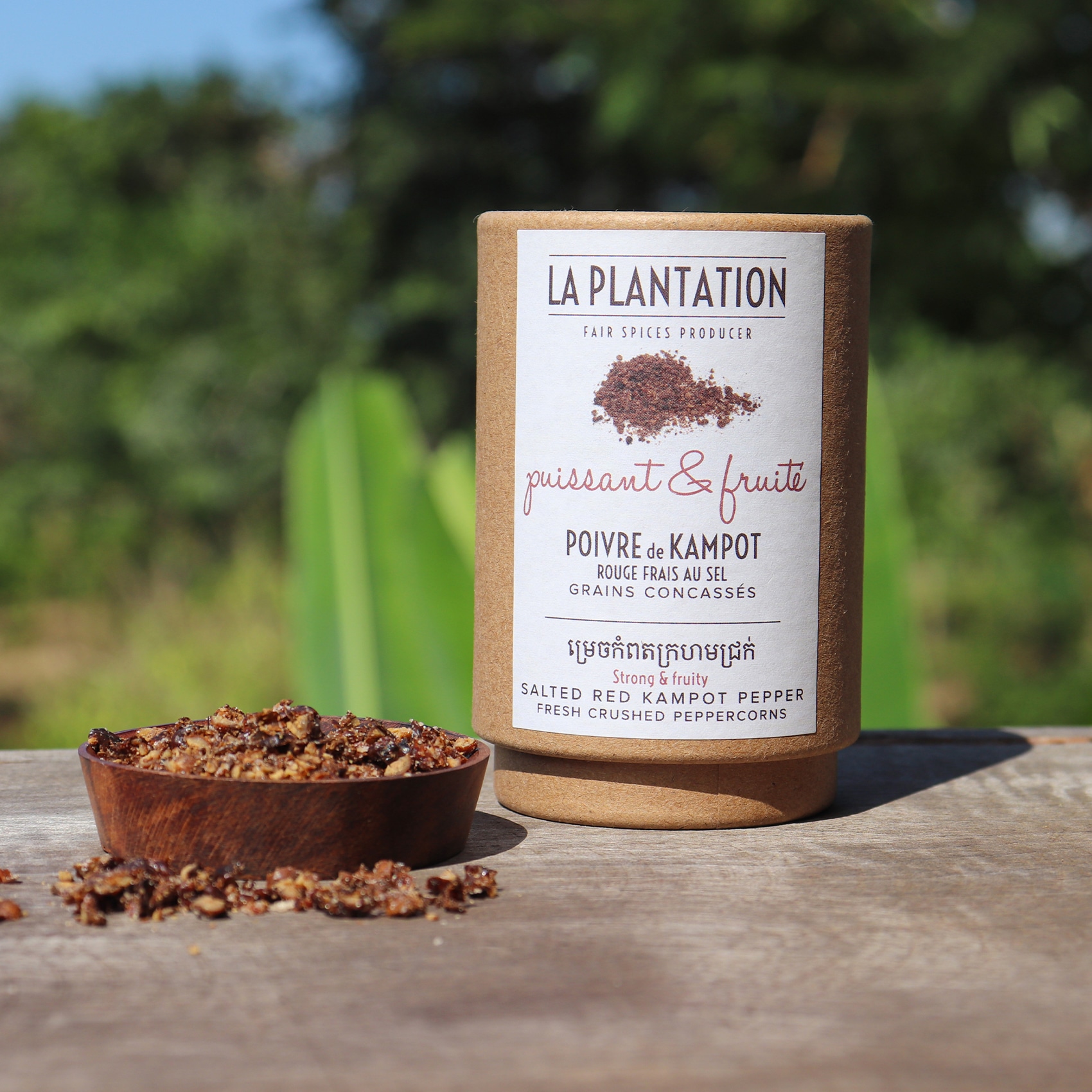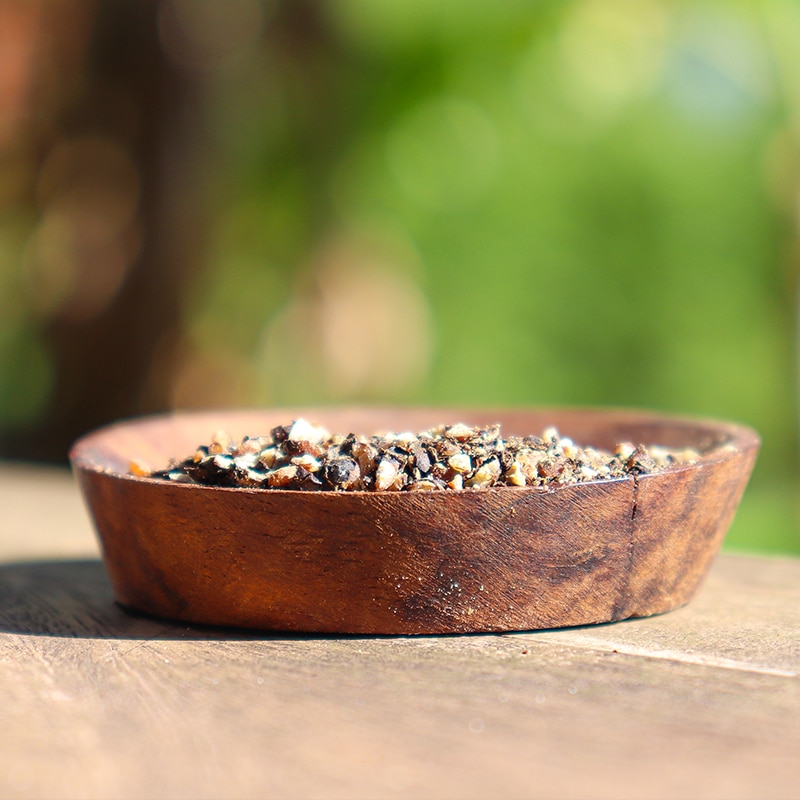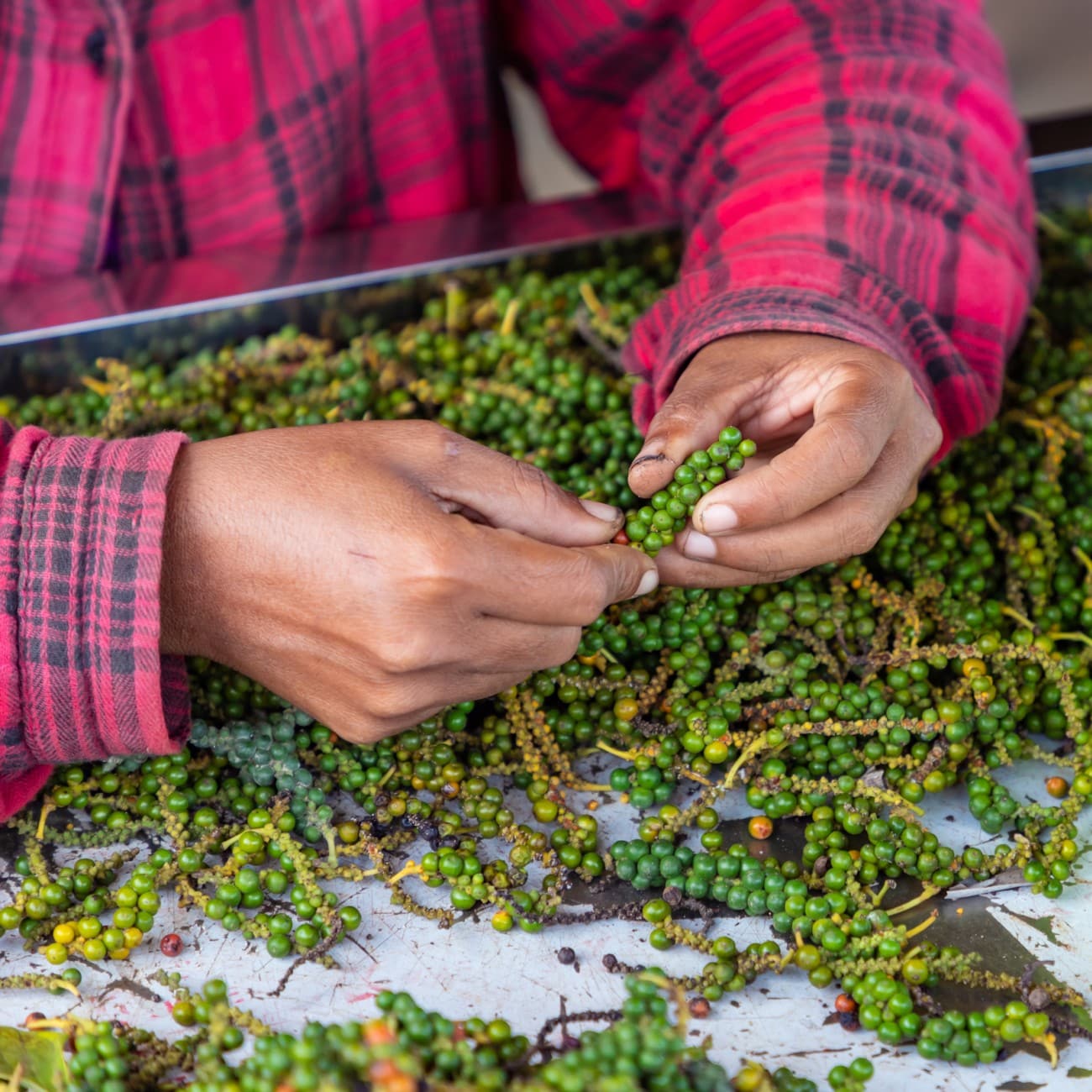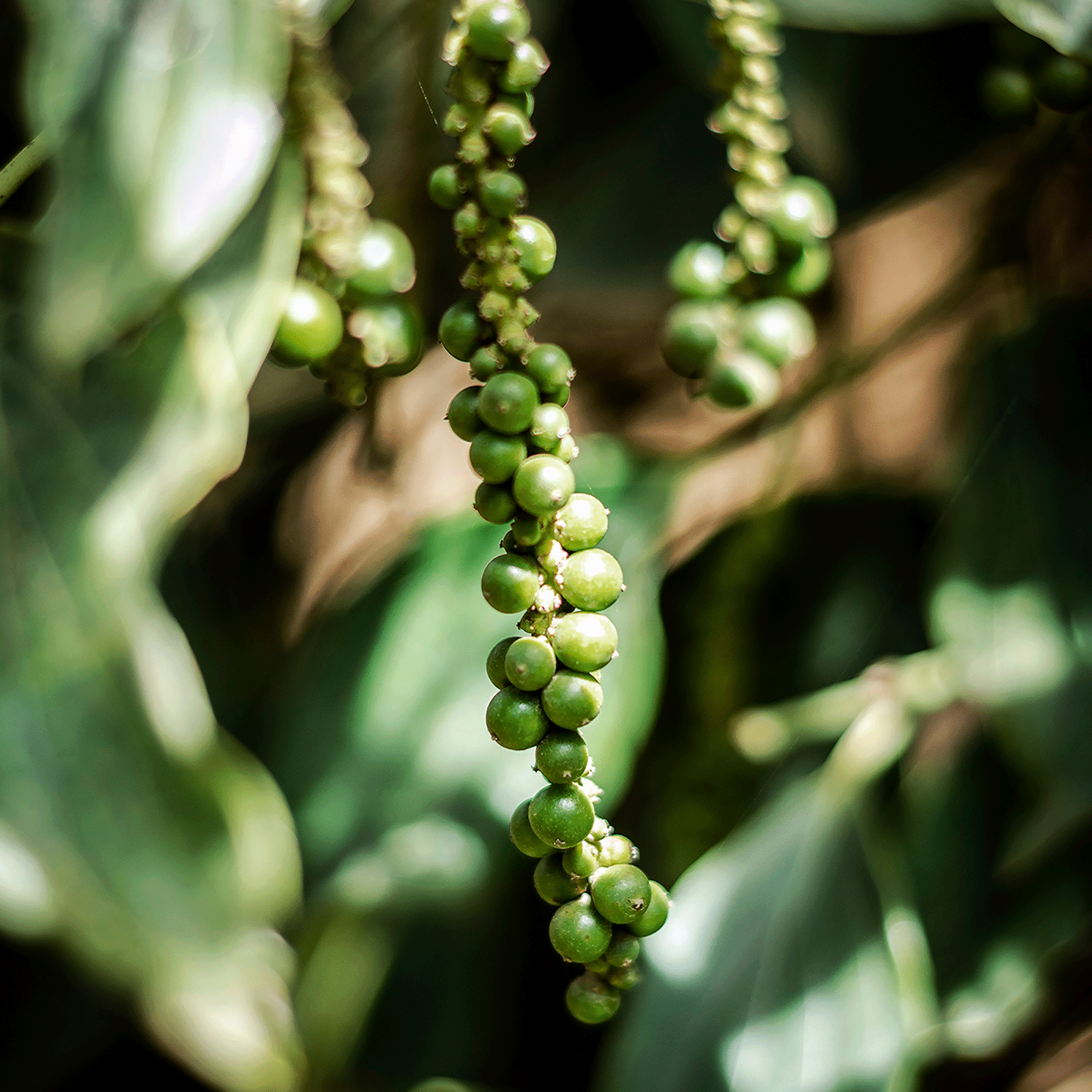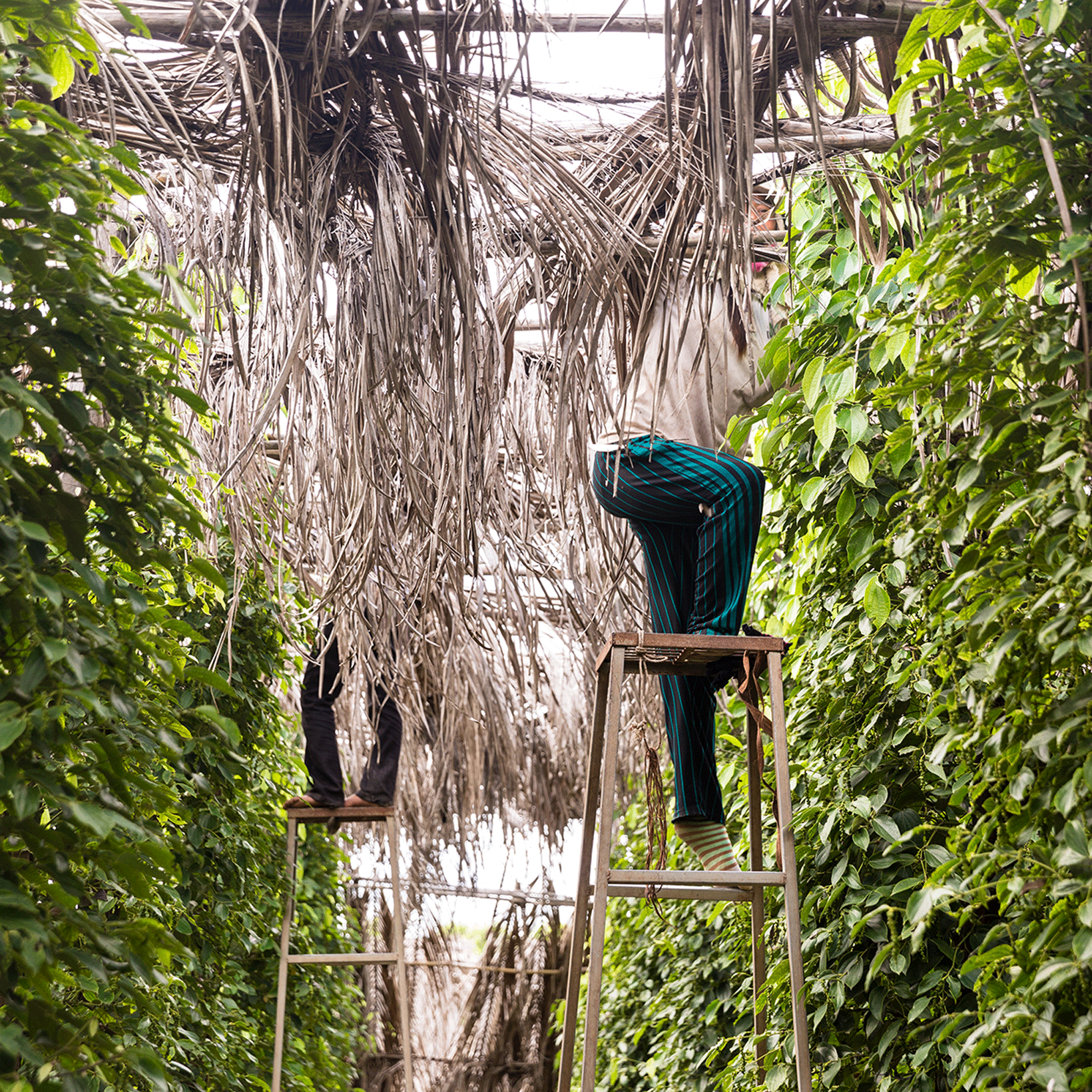
How does Kampot Pepper grow?
Do you really know Kampot Pepper? Today, we tell you all about its origins, the meticulous cultivation process and the dedication of our farmers in the lush Kampot region of Cambodia. Learn how climate and soil play a vital role in shaping pepper’s unique flavour profile and distinctive aroma. From planting to harvesting, you’ll discover the sustainable practices that have earned Kampot Pepper the status of a prestigious geographical indication.
Whether you’re a pepper novice or an expert, we’ll tell you all about growing Kampot pepper on our family farm: La Plantation, as we are celebrating our 10th anniversary this year. Don’t miss this opportunity to discover the incredible journey of la Plantation and of one of the most sought-after spices in the world… You’ll never look at your Kampot Pepper corns in the same way again!
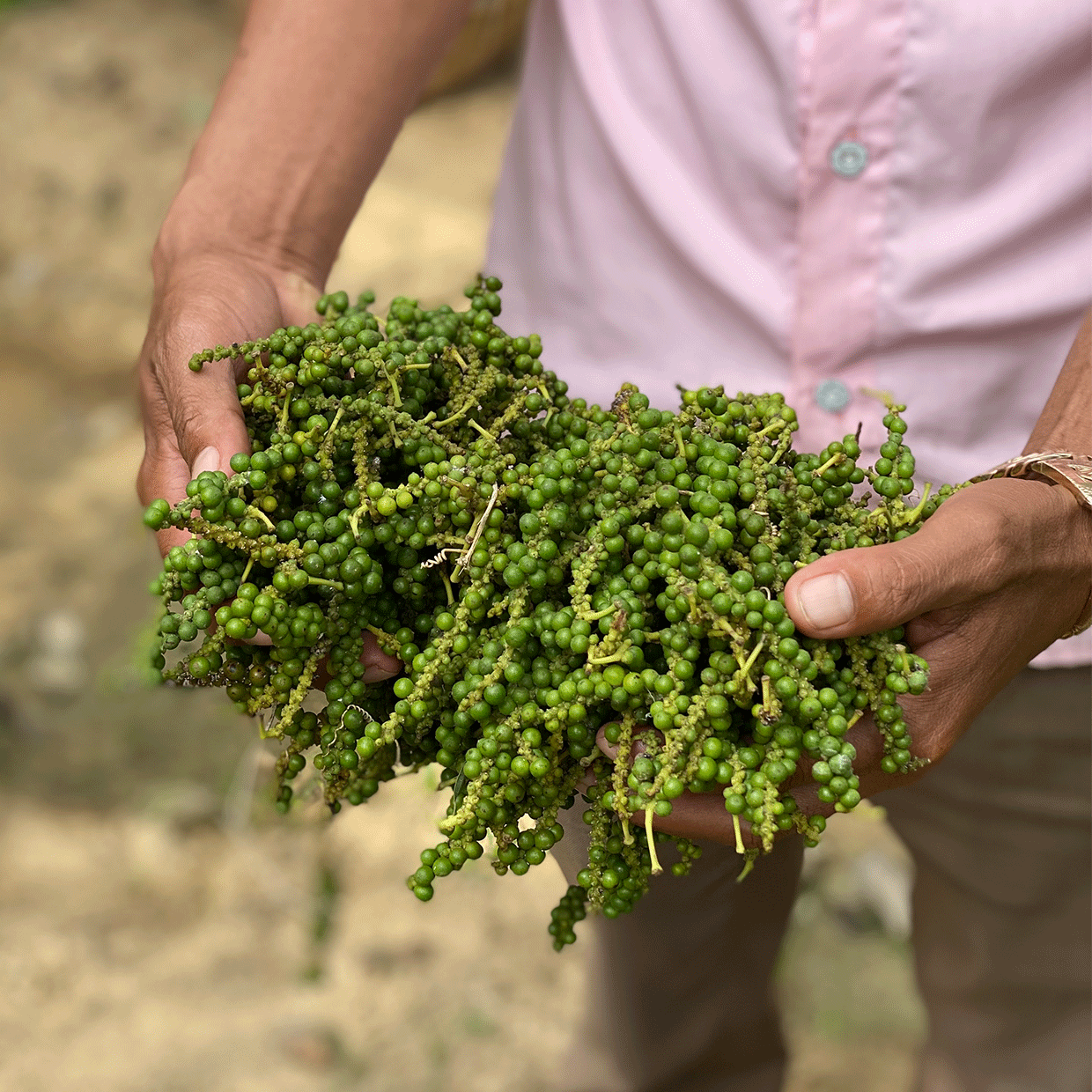
Certified pepper, grown using traditional and organic methods
In Kampot, we produce an artisan pepper following the region’s ancestral traditions. Every step of the way, you can be sure of an exceptional pepper on your table!
Kampot pepper is a variety of Piper Nigrum, originally from Kerala in India. It was introduced to the region in the 13th century and benefits from the exceptional terroir of Kampot, which is enhanced by traditional cultivation methods. The exceptional character of this pepper has enabled Kampot Pepper to obtain a Protected Geographical Indication (PGI) in 2010 in Cambodia and recognised in Europe since 2016.
The annual cycle of Kampot pepper through the seasons: a natural fertiliser
Our Kampot pepper plants begin their new annual cycle in July after the harvest and at the start of the rainy season. It is at this time that our farmers replenish the pepper plantation by adding a homemade mixture of natural fertilisers to each pepper plant, made up of dried cow dung, bat guano and calcium with burnt rice husks. This manual operation will take our team of farmers around two months.
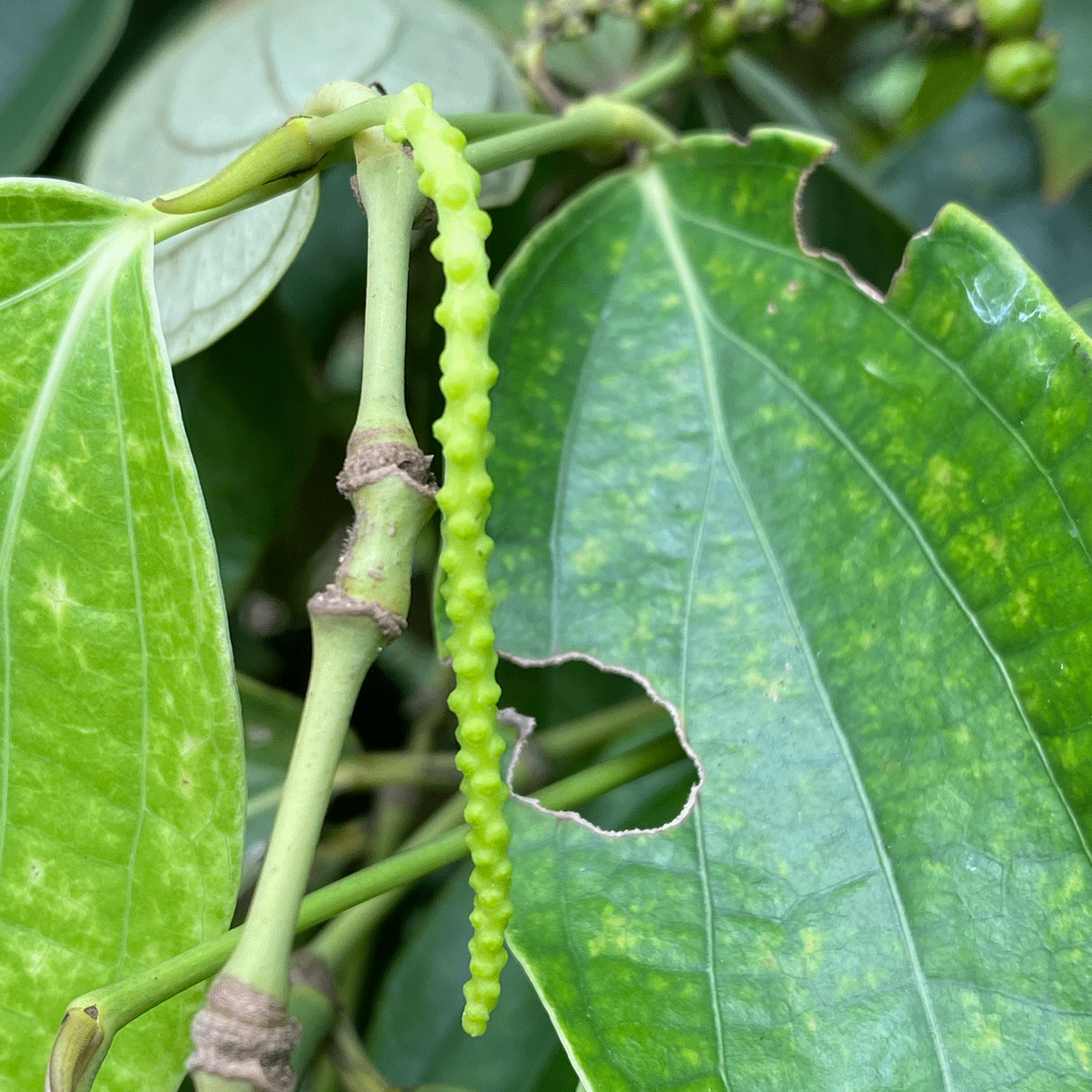
The rainy season in Kampot: pepper growing resumes
During the summer months, and especially in September, the rains water the pepper plant abundantly. This beneficial rain, after the long dry season, allows the plant to resume its growth cycle. A new leaf and a new bunch of pepper appear opposite each other on most stems. Tiny bunches form and elongate in just a few days.
This is the time when insects come to munch these tender shoots. To protect ourselves from these pests, we spray the pepper plants with a natural repellent, concocted from roots and leaves that have been known for generations to repel insects.
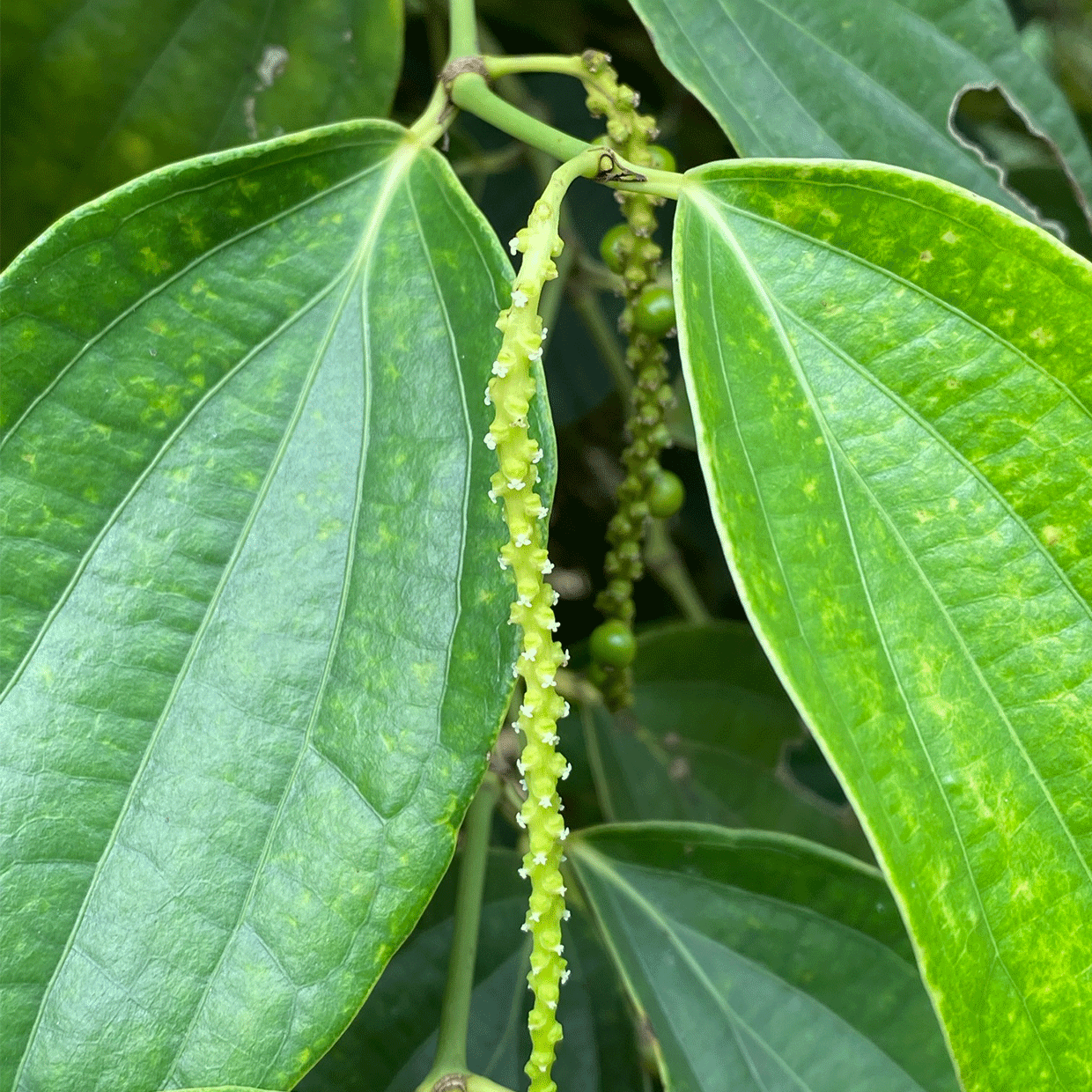
The flowering of the Kampot Pepper: a unique moment
Microscopic white flowers appear on each cluster. It is at this precise moment that rain becomes essential, as it pollinates the bunch by trickling down. If it doesn’t rain, the cluster will remain sterile and fall to the ground. Nature doing things well, the rainy season allows the formation of the small peppercorns that start to appear on the bunch. You’ll have to wait another two months for these beautiful green peppercorns, which we harvest while they’re still young to produce our exclusive product: fresh Kampot pepper with salt. If you haven’t tried it yet, join the club of aficionados who, once they’ve bitten into it, can’t get enough.
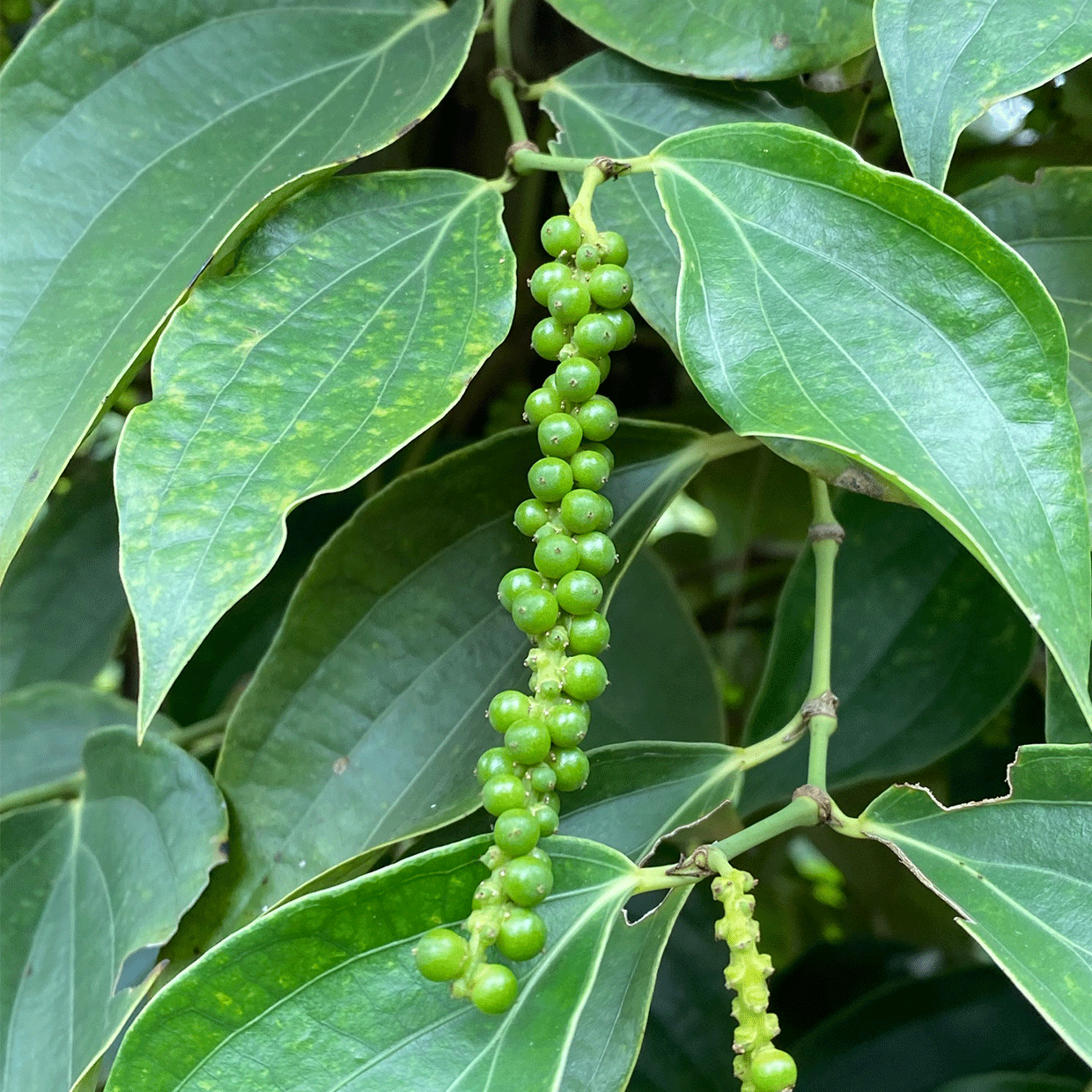
The dry season in Kampot: the peppercorns ripen
From November onwards, the rains fade, giving way to a drier climate, with mild temperatures until January and much higher thereafter, until the heat peaks in April. The bunches of Kampot pepper get bigger as the months go by. In December and January, we hand-pick the bunches that have not yet set, for Kampot Salt Pepper. For dry Kampot Pepper, we then wait patiently for the stone to form in each peppercorn. From March onwards, the peppercorns take on a dark green colour. Gradually, the pepper matures and the first red peppercorns appear on the bunches; the harvest is about to begin.
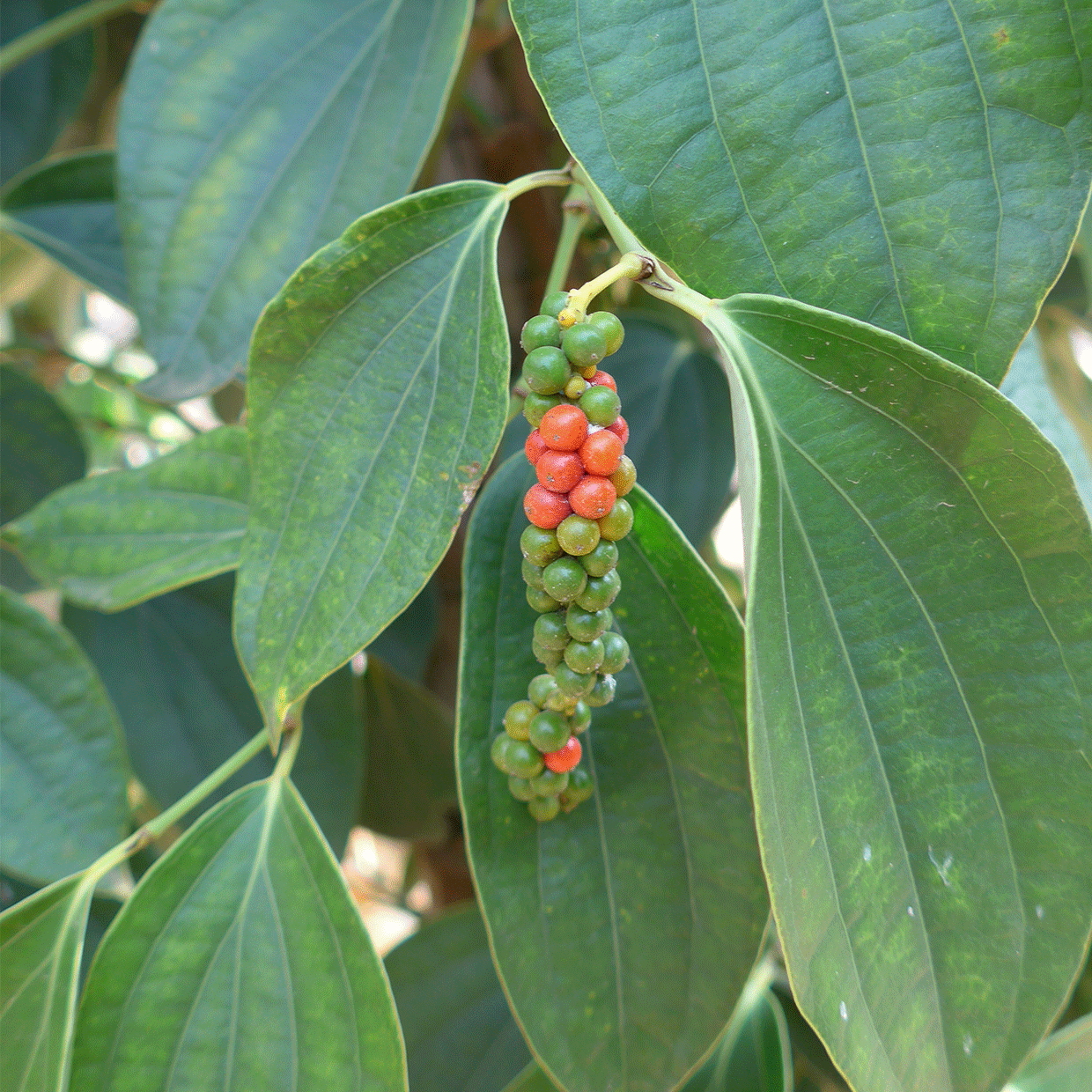
Kampot pepper: green pepper or red pepper?
There are two options: gently remove the red berries one by one and leave the bunch to ripen on the plant, or harvest the bunch, which contains between 20 and 30% red berries. The de-stemming and separation of the green and red berries will then be done on the table, by hand, by our team of selectors. And yes, at La Plantation, it’s meticulous manual work that guarantees you’ll taste the best pepper in the world: Kampot PGI pepper!

The mystery of Bird Pepper
The race against time and the birds begins as the bunches turn red. The fruit-eating bird, the goiavore bulbul, is very fond of this ripe, juicy seed. It will swallow the kernel in its droppings. It’s a treasure hunt to find these few grains of the rarest pepper in the world, the real Bird Pepper.
It’s time to harvest Kampot Pepper by hand
At the end of the dry season, in June, it’s time to harvest all the bunches of pepper from the plantations to let the pepper trees regain their strength before the new season.
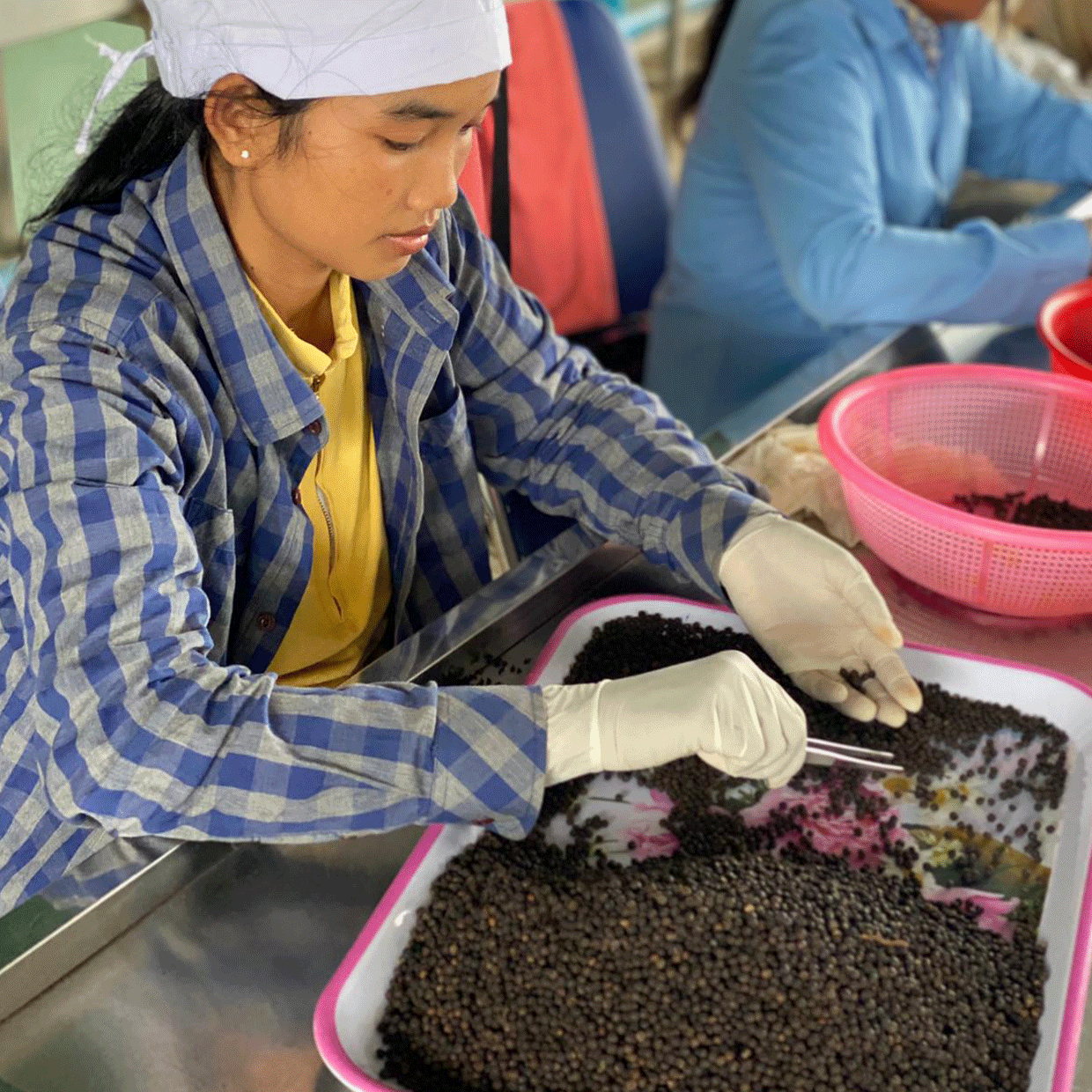
Daily manual labour on our farm in Kampot
Throughout this annual cycle, our team of farmers will have taken care of the pepper plants by providing them with the nutrients they need, softening the soil several times a year by hoeing around the pepper plants, hand weeding and watching out for any insect or termite attacks. Organically grown Kampot pepper requires daily care and needs to be watered by hand, plant by plant, several times a week during the dry season. During the rainy season, on the other hand, the water has to be drained from the pepper plants so that it doesn’t stagnate at the roots.
Our reward for this manual labour is the production of the best pepper in the world, Kampot Pepper PGI. So let’s get cooking, and enjoy Kampot Pepper at home, adding a unique flavour to our favourite dishes!
